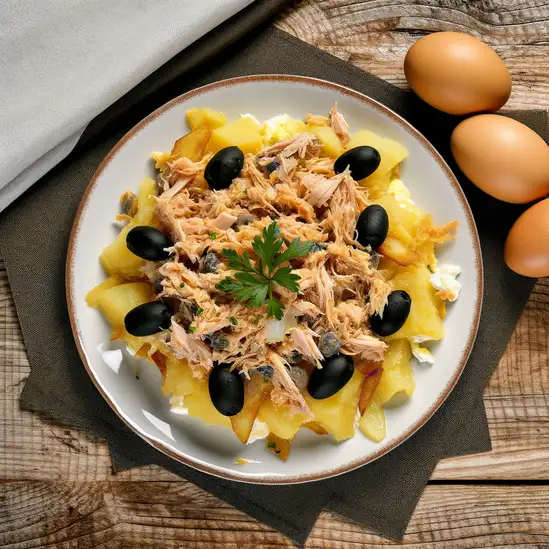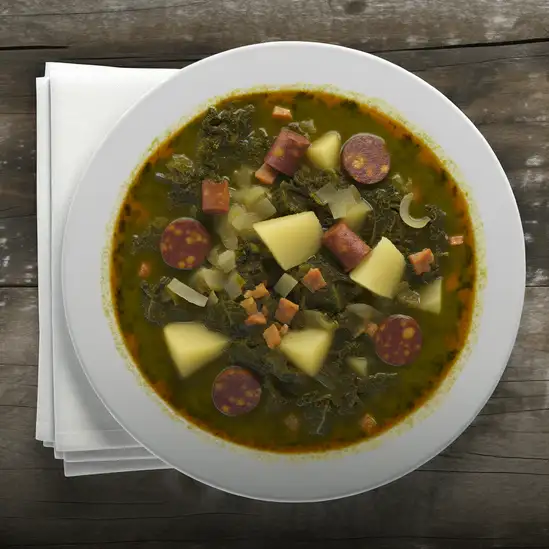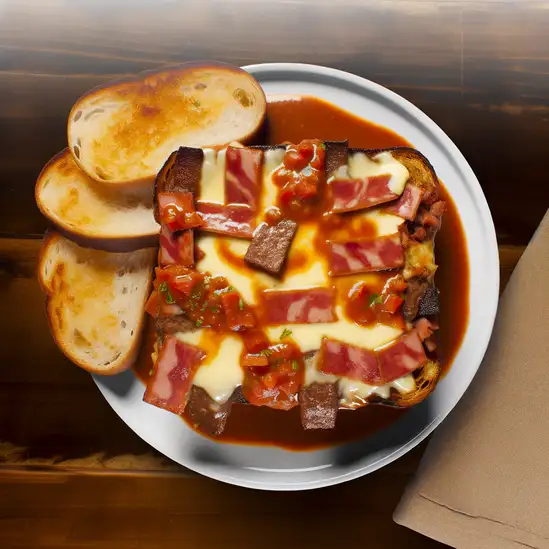



If you ever find yourself wandering through northern Portugal,Guimarães is a place that quietly steals your heart without even trying. The moment you step into its cobbled streets,there’s this warm,almost timeless energy that wraps around you. It’s a city where medieval walls and red-tiled roofs meet the buzz of lively cafés and the soft murmur of locals chatting over coffee. You can almost hear history whispering from every corner,since Guimarães is often called the birthplace of Portugal,and that sense of pride is palpable in the air. Walking through the historic center,your senses come alive—the scent of freshly baked bread mingling with the earthy aroma of old stone buildings,the clink of glasses from a nearby tavern,and the gentle rustle of leaves in the small parks tucked between ancient alleys. Stop by a local pastelaria and try a pastel de nata; the flaky,creamy sweetness feels like a little celebration in your mouth. The city’s character is a beautiful blend of old-world charm and youthful spirit,thanks to its vibrant university crowd and the artsy vibe that spills out from galleries and street murals. What really makes Guimarães special is how it invites you to slow down and soak it all in—whether that’s watching the sunset paint the castle walls golden or joining a lively festival where traditional music and dance fill the night. It’s a place that feels both deeply rooted and wonderfully alive,and once you’re there,you’ll understand why it’s so beloved by those who’ve been lucky enough to explore it.
The information on this page is currently being reviewed by Tripkliq and should be used as a guide only
Eng word: Hello
Eng pronunciation: Oh-lah
Local language: Olá
Eng word: Goodbye
Eng pronunciation: Ah-deh-oosh
Local language: Adeus
Eng word: Thank you
Eng pronunciation: Oh-bree-gah-doo
Local language: Obrigado
Eng word: How much
Eng pronunciation: Kwahn-too koos-tah
Local language: Quanto custa
Eng word: Toilet
Eng pronunciation: Bahn-yay-roo
Local language: Banheiro
Eng word: Help me
Eng pronunciation: Ah-zhoo-dee mee
Local language: Ajude-me
Eng word: Yes
Eng pronunciation: Seem
Local language: Sim
Eng word: No
Eng pronunciation: Now
Local language: Não
Eng word: Excuse me
Eng pronunciation: Kohm lee-sen-sah
Local language: Com licença
Guimarães is often referred to as the 'birthplace of Portugal' because it was here that Afonso I, the first King of Portugal, was born in 1109. The city played a crucial role in the formation of the Portuguese nation.
The iconic Guimarães Castle, built in the 10th century, is one of the most important historical landmarks in Portugal. It was originally constructed to defend the monastery from attacks by Moors and Normans.
In 2001, the historic center of Guimarães was designated a UNESCO World Heritage Site. The area is renowned for its well-preserved medieval buildings and charming streets.
The Palace of the Dukes of Braganza, built in the 15th century, is a magnificent example of medieval architecture. It was the residence of the Dukes of Braganza, one of the most influential noble families in Portugal.
Largo da Oliveira is a picturesque square in the heart of Guimarães, named after an ancient olive tree. The square is surrounded by historic buildings, including the Church of Nossa Senhora da Oliveira and the old town hall.
This small Romanesque church, located near Guimarães Castle, is believed to be the place where Afonso I was baptized. It dates back to the 12th century and is a significant religious site.
Located just outside Guimarães, Citânia de Briteiros is an archaeological site featuring the remains of an ancient Celtic settlement. The site offers a fascinating glimpse into the pre-Roman history of the region.
This former monastery, now a luxury pousada (historic hotel), dates back to the 12th century. It offers stunning views of Guimarães and is a beautiful example of Portuguese monastic architecture.
Penha Mountain, located near Guimarães, is a popular destination for tourists and locals alike. It offers breathtaking views, hiking trails, and the Sanctuary of Penha, a beautiful pilgrimage site.
In Guimarães, the most common Power Adaptor is Type C, Type F.



A traditional dish made with shredded salted cod, onions, and thinly chopped fried potatoes, bound together with scrambled eggs and garnished with black olives and parsley.

A comforting soup made with kale, potatoes, onions, and chorizo, often served as a starter in Portuguese meals.

A hearty sandwich made with layers of cured meats, sausage, and steak, topped with melted cheese and a rich tomato and beer sauce.

A rich and creamy pudding made with eggs, sugar, and bacon, known for its unique flavor and texture.

A savory rice dish cooked with pork, spices, and sometimes blood sausage, offering a robust flavor profile.

A traditional almond cake made with eggs, sugar, and ground almonds, often enjoyed as a dessert.
Lisbon feels like a city that’s been gently kissed by the sun and the sea,where every street corner hums with life and stories. Imagine wandering through narrow,cobbled alleys lined with pastel-colored buildings,their azulejo tiles catching the light just right. The air carries a mix of salty ocean breeze and the rich aroma of freshly baked pastéis de nata—those flaky custard tarts you’ll find in every bakery. There’s a rhythm here,a kind of laid-back energy that invites you to slow down and soak it all in.
You’ll hear the soulful strains of fado music drifting from cozy taverns,a haunting soundtrack that feels like the city’s heartbeat. Locals chat animatedly over glasses of vinho verde or ginjinha,a cherry liqueur that’s as sweet as the conversations. The city’s hills offer stunning views where terracotta rooftops spill down toward the Tagus River,and the sunlight shimmers on the water like a thousand tiny mirrors.
Lisbon’s charm lies in its blend of old and new—ancient trams clatter past sleek street art,and centuries-old castles overlook buzzing markets filled with fresh seafood and vibrant produce. It’s a place where history and modern life dance together effortlessly,inviting you to explore,taste,and feel its unique pulse. Trust me,once you’ve wandered through its neighborhoods and tasted its flavors,Lisbon stays with you long after you leave.
Imagine stepping into a city where every corner hums with a quiet,soulful energy—that’s Porto. It’s a place where the old world meets a lively,modern pulse,wrapped in the warm glow of terracotta rooftops and the shimmering Douro River. Walking through its narrow,cobbled streets,you’ll catch the scent of freshly baked pastéis de nata mingling with the salty breeze from the Atlantic. The city feels alive but unhurried,like it’s inviting you to slow down and savor each moment.
Porto’s character is deeply rooted in its history,yet it’s effortlessly cool. You’ll find colorful azulejo tiles telling stories on building facades,while locals chat animatedly over glasses of rich,ruby-red port wine in cozy,tucked-away taverns. The sound of Fado music drifts softly from a nearby café,adding a layer of melancholy beauty to the evening air. It’s a city that wears its heart on its sleeve—warm,genuine,and a little bit mysterious.
What really makes Porto stick with you is how it tastes and feels. From the first sip of a perfectly chilled glass of Vinho Verde to the crunch of a francesinha sandwich packed with layers of flavor,the city’s culinary scene is a delicious adventure. And when you climb up to the Dom Luís I Bridge at sunset,watching the city light up like a living painting,you realize Porto isn’t just a place to visit—it’s a place to feel alive.
Imagine stepping into a place where the ocean breeze carries the scent of blooming jacarandas and the distant hum of traditional Portuguese guitars fills the air—that’s Funchal for you. This city feels like a warm embrace,perched on the lush,rugged coastline of Madeira. Walking through its cobbled streets,you’ll notice vibrant markets bursting with fresh tropical fruits and the rich aroma of freshly baked bolo do caco bread. The colors here are alive:from the deep blue Atlantic stretching endlessly to the bright bougainvillea cascading down old stone walls.
Funchal’s charm lies in its blend of old-world grace and lively,modern spirit. Locals chat animatedly over glasses of Madeira wine in cozy tavernas,while street art peeks out from unexpected corners,telling stories of the island’s history and culture. The city pulses gently with a relaxed rhythm—you can feel it in the slow,deliberate pace of life and the genuine smiles of the people you meet.
Don’t miss the chance to ride the cable car up to Monte,where the views make your breath catch,or to wander through the botanical gardens,where exotic plants and butterflies create a quiet sanctuary. And when night falls,the harbor lights twinkle like stars,inviting you to savor fresh seafood paired with that sweet,fortified wine Madeira is famous for. Funchal isn’t just a destination; it’s a feeling you carry with you long after you leave.
If you ever find yourself dreaming of a place where the ocean breeze carries the scent of salt and blooming hydrangeas,Ponta Delgada is that kind of spot. It’s the lively heart of São Miguel Island in the Azores,and the moment you step into its cobbled streets,you feel this warm,welcoming pulse—like the city itself is breathing with you. The colorful buildings,with their intricate stonework and bright shutters,seem to tell stories of centuries past,while locals chat animatedly over coffee in cozy cafés that spill out onto sun-dappled squares.
Walking along the marina,you’ll hear the gentle slap of waves against boats and the distant call of seagulls,mingling with the laughter of children playing nearby. The air is fresh,tinged with the promise of adventure,whether you’re about to explore volcanic craters or dive into a plate of freshly caught seafood. Speaking of food,don’t miss trying the local cozido—a stew slow-cooked underground by volcanic heat,rich with flavors that feel like a warm hug on a cool day.
What really makes Ponta Delgada special is its blend of old-world charm and vibrant island life. There’s a relaxed rhythm here,where time slows just enough for you to savor a glass of local wine while watching the sun dip behind the hills. It’s a place that invites you to linger,to explore,and to fall a little in love with the simple,beautiful moments that make travel unforgettable.
Barcelona feels like a vibrant mosaic where every corner pulses with life and color. The moment you step onto its sun-drenched streets,you’re wrapped in a warm Mediterranean embrace—salt in the air,the distant hum of waves mingling with lively chatter from bustling cafés. The city’s energy is contagious,a blend of old-world charm and modern creativity that invites you to slow down and savor each moment.
Wandering through the narrow alleys of the Gothic Quarter,you’ll hear the soft clinking of glasses and the melodic strum of a street guitarist,while the scent of fresh-baked bread and roasting coffee drifts from cozy bakeries. Barcelona’s architecture is like a living art gallery—Gaudí’s whimsical buildings,with their undulating lines and vibrant mosaics,feel almost dreamlike against the bright blue sky. It’s a place where history and imagination dance together.
Food here is a celebration in itself. Imagine biting into a perfectly crispy,golden croqueta or savoring the rich,smoky flavors of a traditional paella,all washed down with a glass of chilled cava. The city’s markets,like La Boqueria,burst with colors and aromas—ripe tomatoes,fresh seafood,and fragrant herbs—that make you want to taste everything.
What makes Barcelona truly special is its spirit:a city that lives passionately,where locals and visitors alike gather to share stories,laughter,and the simple joy of being in a place that feels both timeless and alive. Trust me,once you’ve experienced it,you’ll carry a piece of Barcelona’s magic with you long after you leave.
Valencia feels like a sun-drenched embrace the moment you step into its lively streets. There’s this effortless blend of old-world charm and modern energy that makes you want to slow down and soak it all in. Imagine wandering through narrow alleys where the scent of fresh oranges mingles with salty sea air,while the distant hum of lively chatter and clinking glasses spills out from cozy tapas bars. The city pulses with life,but it’s never overwhelming—more like a warm invitation to explore at your own pace.
What really sets Valencia apart is its vibrant culture and the way it celebrates food and community. You can’t visit without tasting authentic paella right where it was born,the saffron-infused rice bursting with fresh seafood or tender chicken,paired with a glass of chilled local wine. The Mercado Central is a feast for the senses,overflowing with colorful produce,fragrant spices,and the friendly banter of vendors who clearly love their craft.
Beyond the city’s historic heart,the futuristic City of Arts and Sciences offers a striking contrast—gleaming white structures that look like they belong in a sci-fi movie,surrounded by tranquil water reflecting the sky. And when you need a break,the Turia Gardens stretch out like a green ribbon,perfect for a bike ride or a lazy afternoon picnic. Valencia isn’t just a place to visit; it’s a place to feel alive,where every corner invites you to discover something new and deliciously unexpected.
Scammers may pose as charity workers, asking tourists for donations to non-existent causes or organizations.
Individuals posing as official tour guides may approach tourists, offering overpriced or low-quality tours with little historical or cultural value.
Some shops near tourist hotspots may sell generic souvenirs at inflated prices, targeting unsuspecting visitors.
In crowded areas, such as near the Castle of Guimarães or Largo da Oliveira, pickpockets may target distracted tourists.
Certain restaurants may add hidden fees or charge for items like bread or appetizers that tourists assume are complimentary.
Street performers may demand payment after a tourist takes a photo or watches their act, even if no prior agreement was made.
Some taxi drivers may take longer routes or fail to use the meter to overcharge tourists unfamiliar with the area.
Portugal has decriminalized the possession of small amounts of drugs for personal use, including cannabis. However, this does not mean that drugs are legal. Possession of small amounts may result in a fine or mandatory treatment rather than criminal charges. Trafficking and possession of larger quantities are still criminal offenses. Tourists should be cautious and avoid any involvement with illegal drugs.
In Guimarães, as in the rest of Portugal, smoking is prohibited in enclosed public spaces, including restaurants, bars, and public transportation. There are designated smoking areas in some public places, but it is important to look for signs indicating where smoking is allowed. Smoking is also banned in certain outdoor areas, such as near schools, hospitals, and playgrounds.
Vaping is subject to similar regulations as smoking in Guimarães. It is prohibited in enclosed public spaces and certain outdoor areas. Tourists should look for designated vaping areas and be mindful of local regulations to avoid fines.
What are other people saying about Guimarães?
Recent Social posts about Guimarães
There is nothing to show you for now.